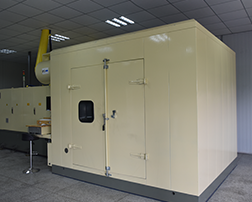

Inertia bench testing machine
This testing machine is mainly used for conventional inertia braking, pressure failure testing, noise testing, and brake disc DTV testing of hydraulic brakes for sedans and light trucks weighing less than 3.5 tons. Various existing brake inertia bench test standards can be implemented.
Brake pad manufacturers are introducing which brake pad brand products are better. If you have any knowledge about brake pads or have any problems during purchase, please feel free to contact us at any time. We hope it will be helpful to you!

Like all objects, the strength of intermolecular connections in their material organization decreases at high temperatures. The principle of brake braking is to convert kinetic energy into heat energy by friction to achieve braking (energy Balance theory). Therefore, a large amount of heat generated by friction between brake pads and discs will accumulate on the surface of brake pad friction materials. In order to maintain sufficient strength of brake pads under such high temperature conditions, the original brake pads must use high-temperature resistant resin, high-purity graphite, high-purity Barium sulfate and other materials, And these materials are like choosing coal blocks of the same size from a load of carbon, and the cost will significantly increase. And for inferior brake pads, they wouldn't use such high-end materials.
Therefore, they cannot guarantee stability under high temperature. With the increase of speed, they will have more heat, higher temperature and lower link strength, which will reduce the braking capacity, which is reflected in the extension of Braking distance.
So, the brake pads that you feel are suitable for driving at a speed of 20-60 kilometers per hour in the city do not necessarily mean that you have the same stable braking distance performance at high speeds. When the strength of molecular chains decreases under high temperatures, their wear increases, which is why the service life of general brand brake pads is very short in mountainous areas or under frequent emergency braking conditions.